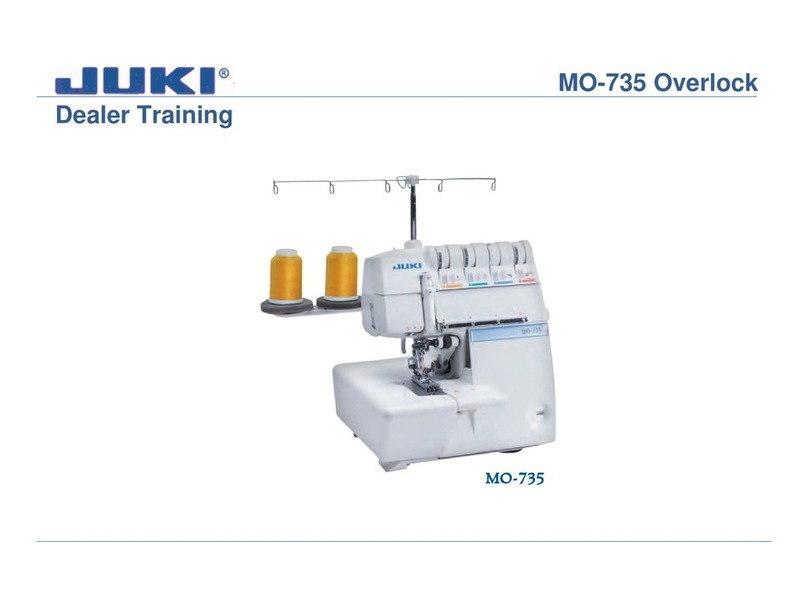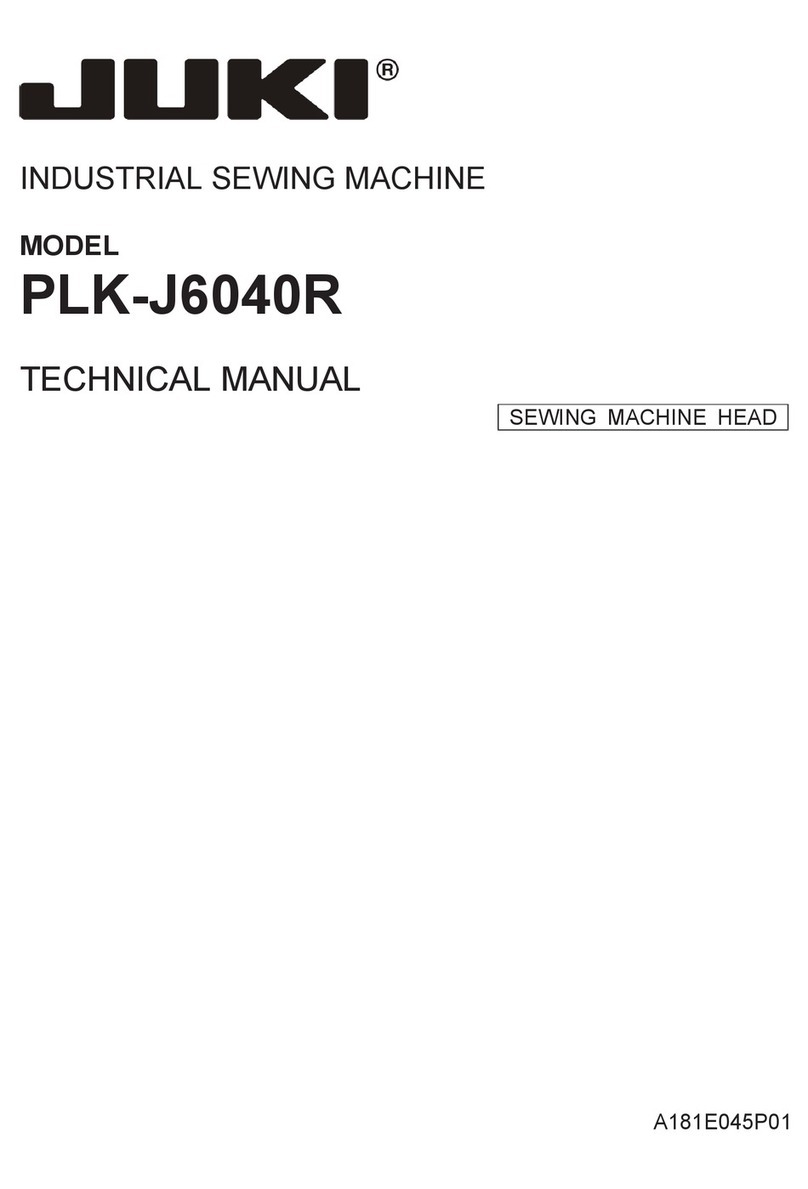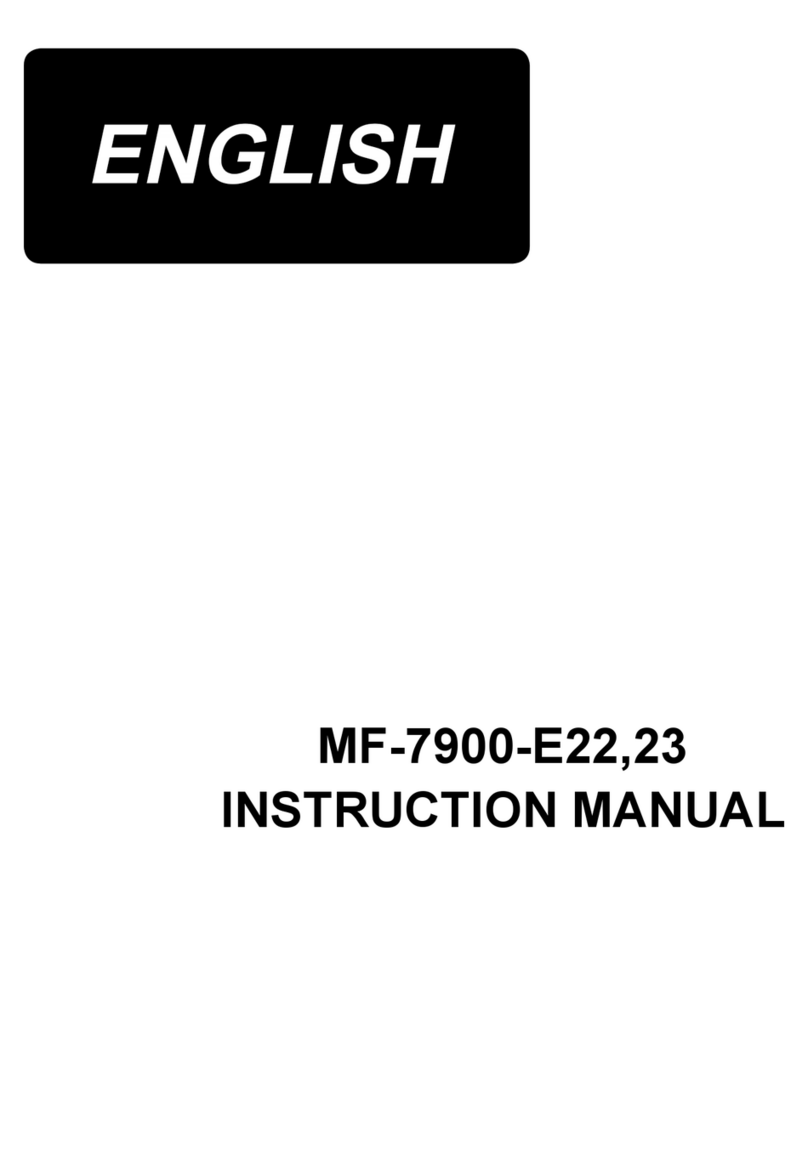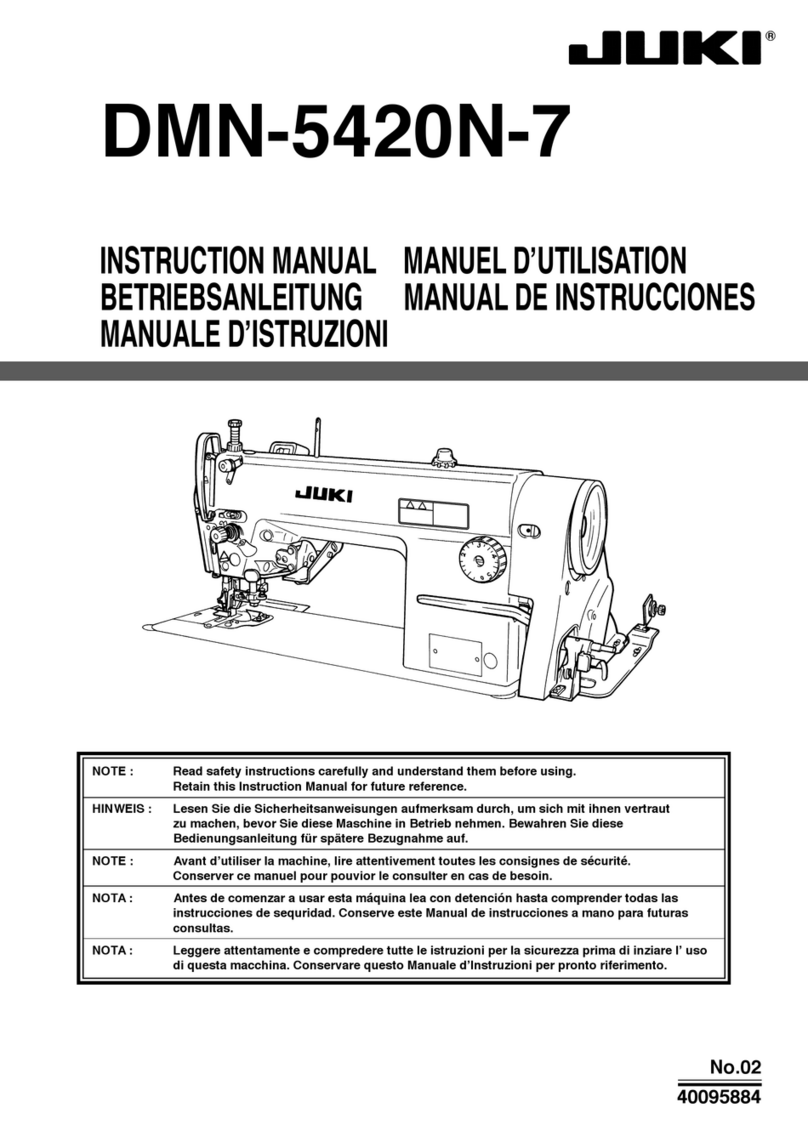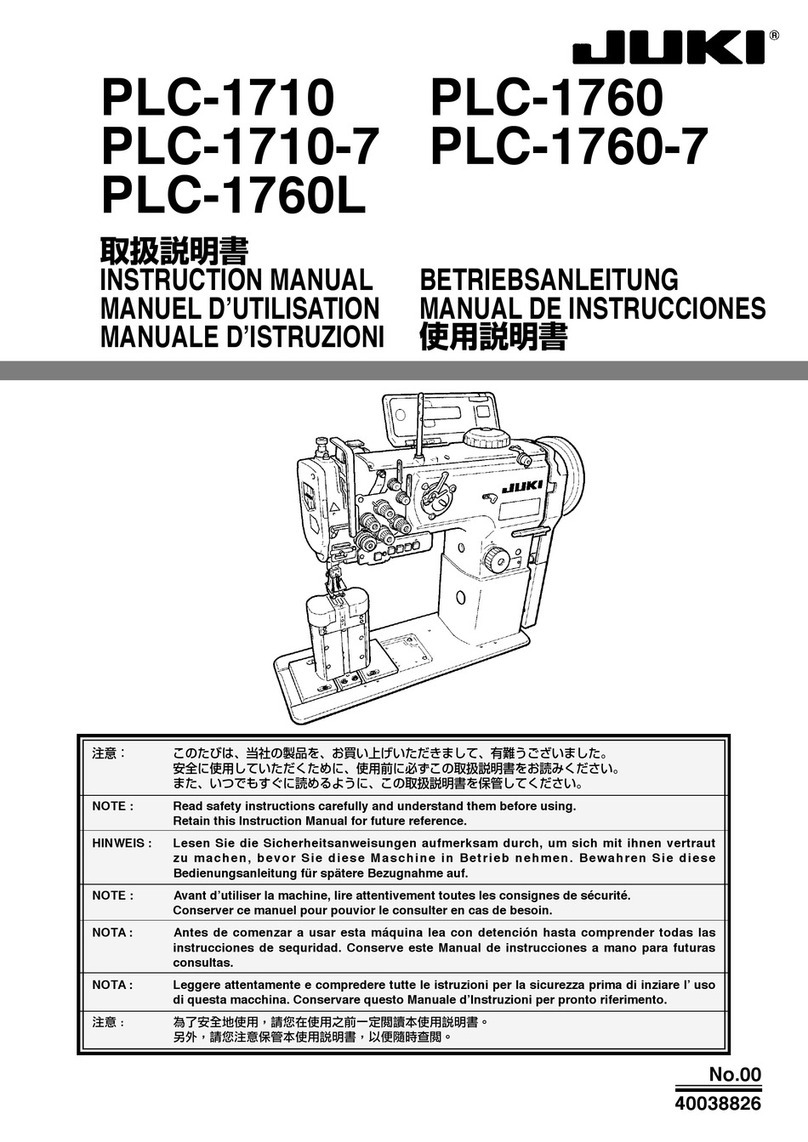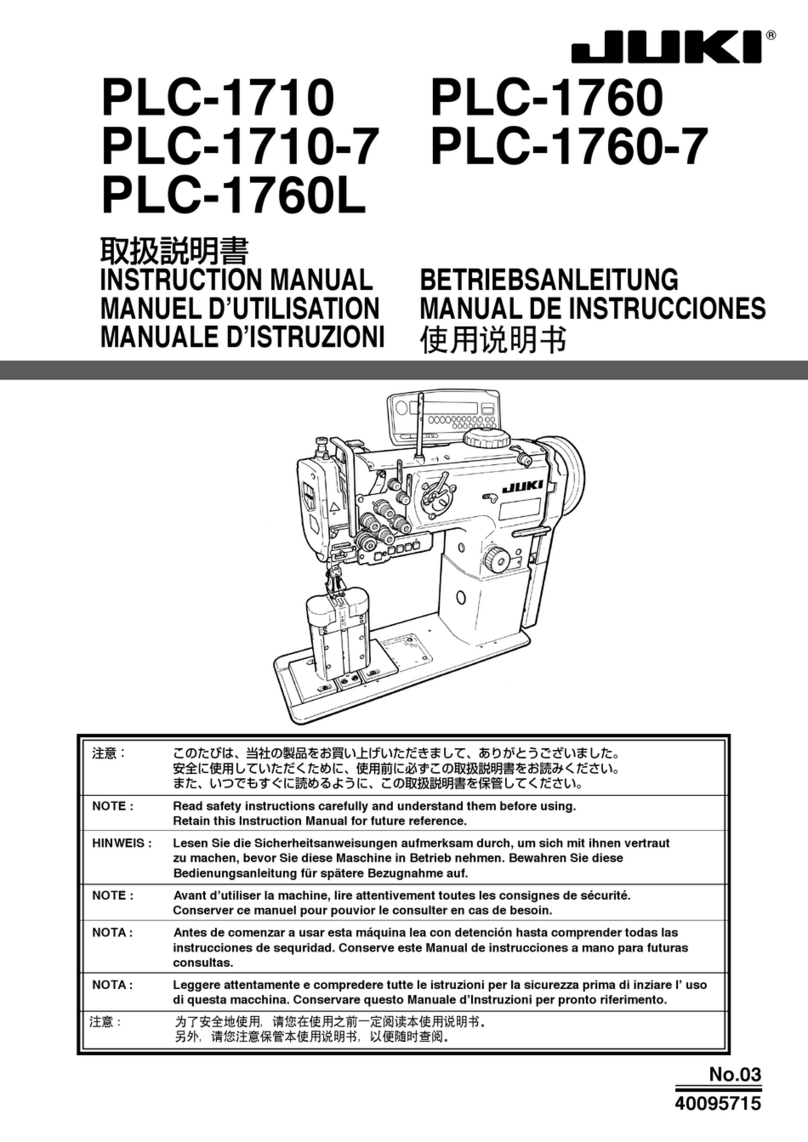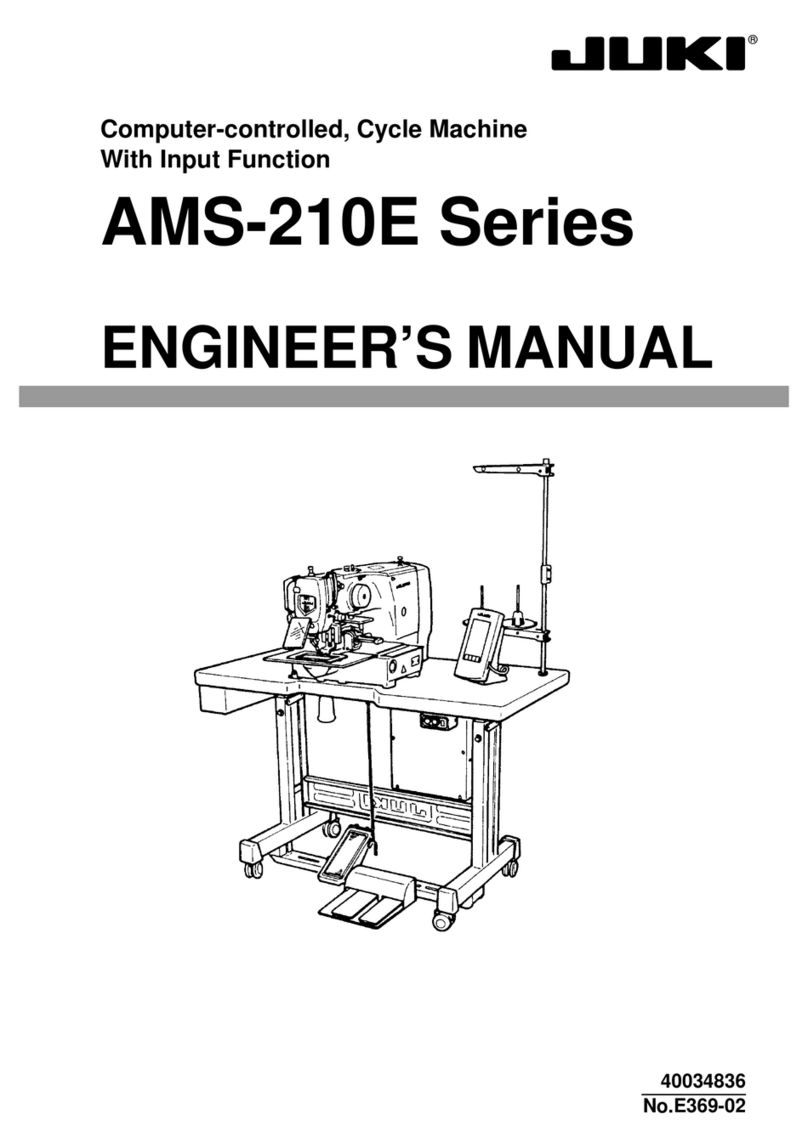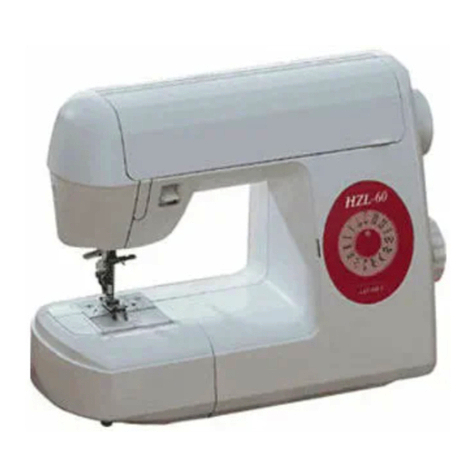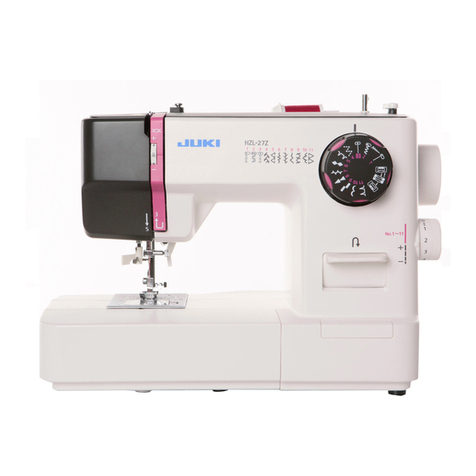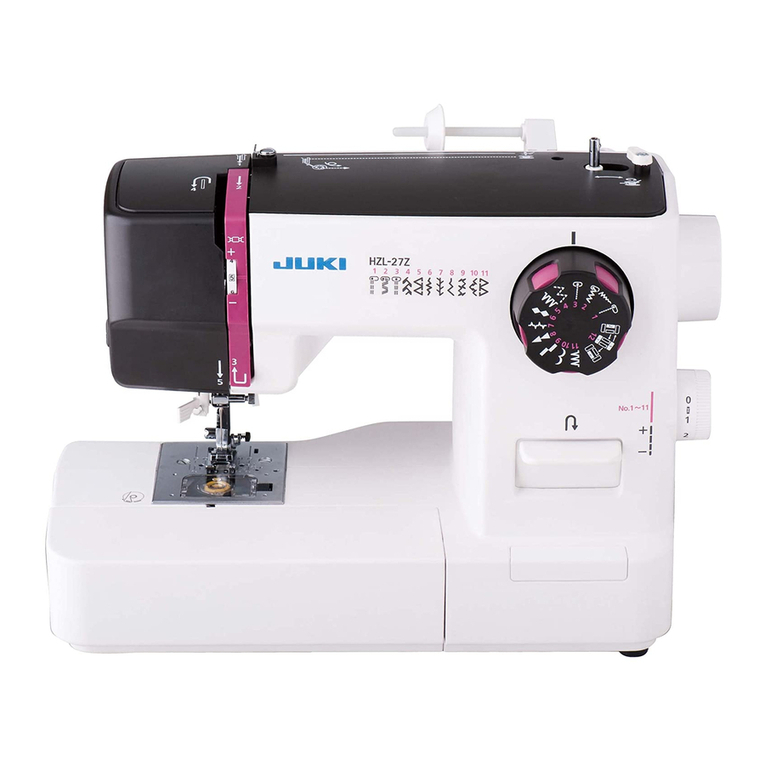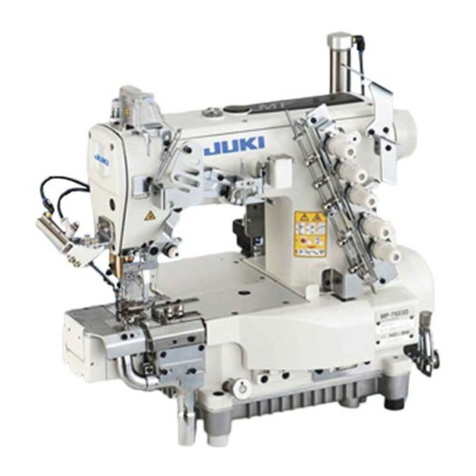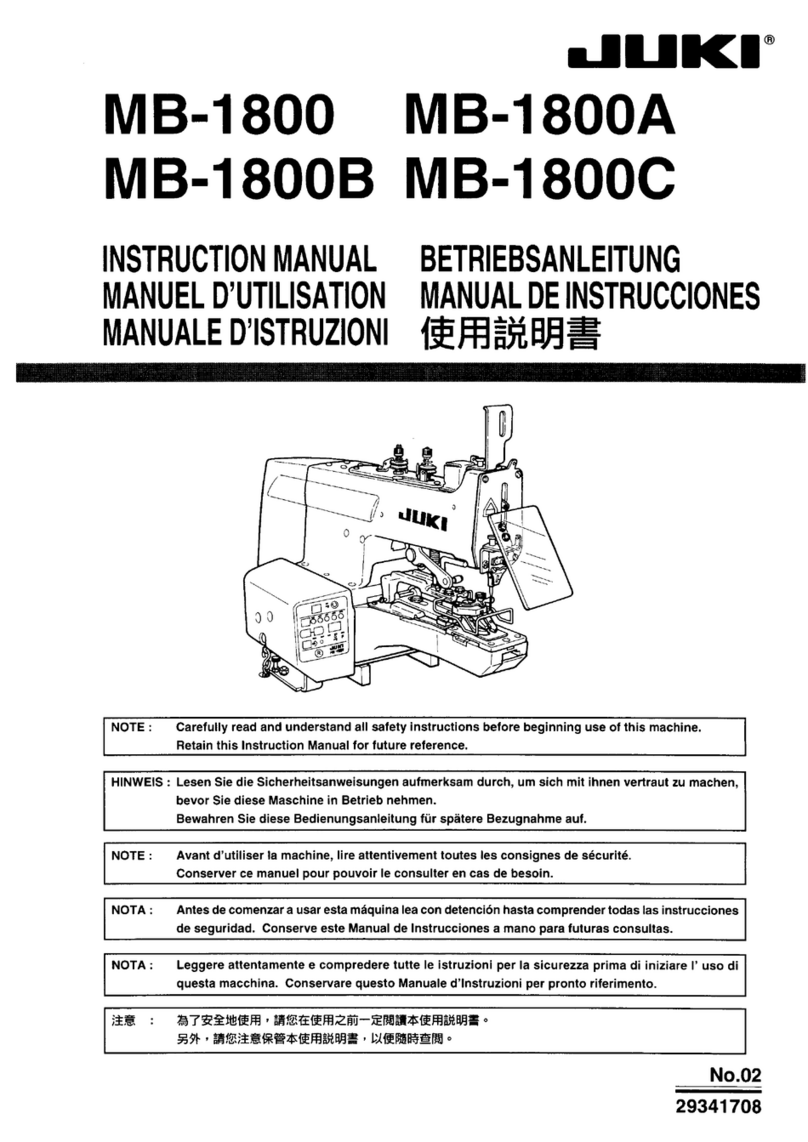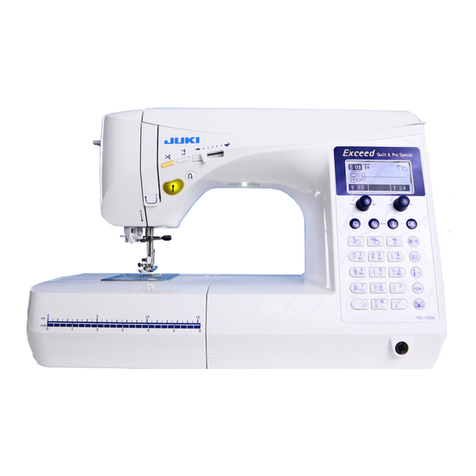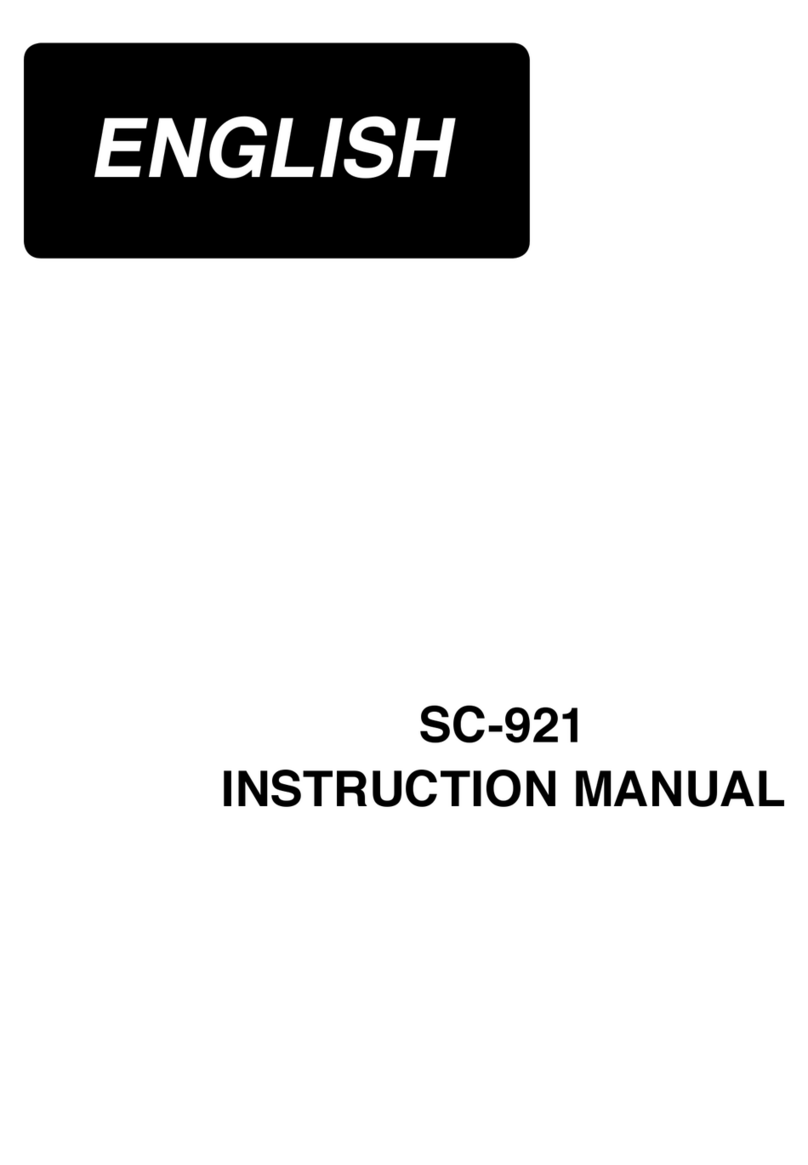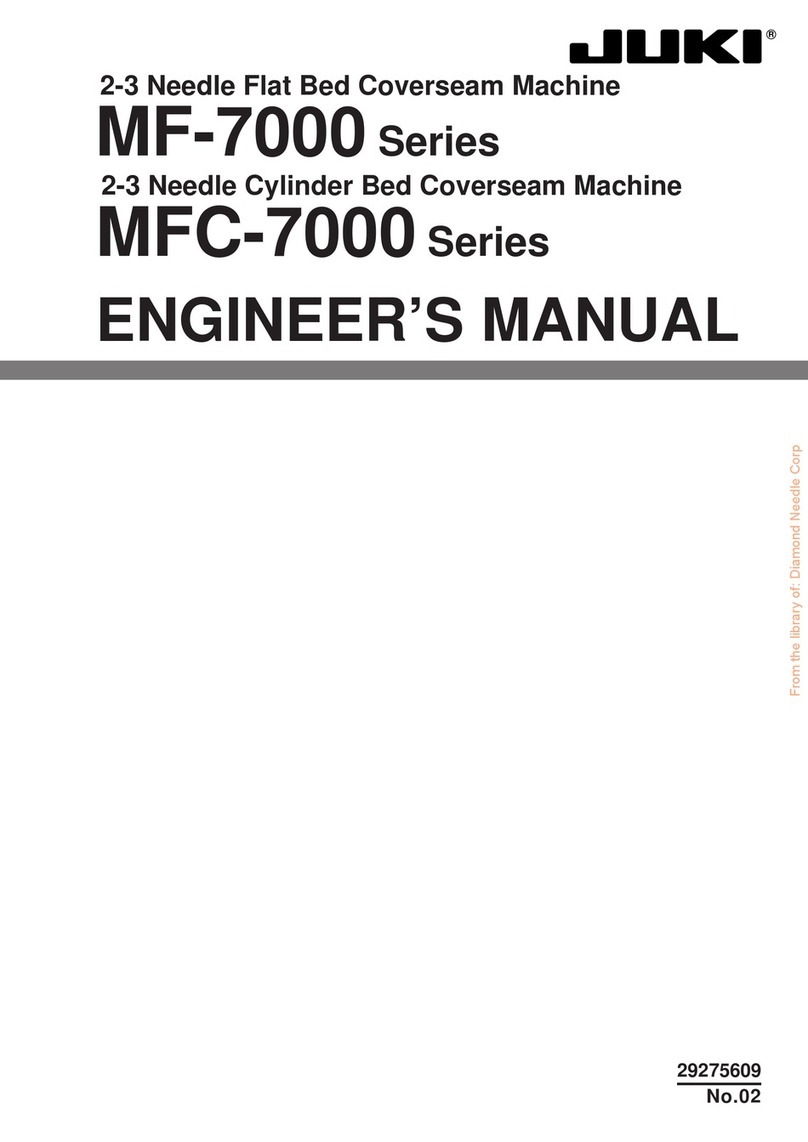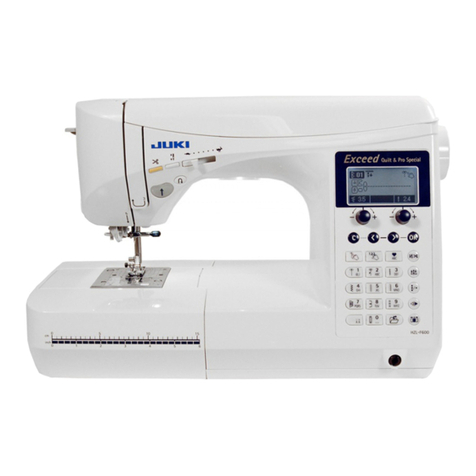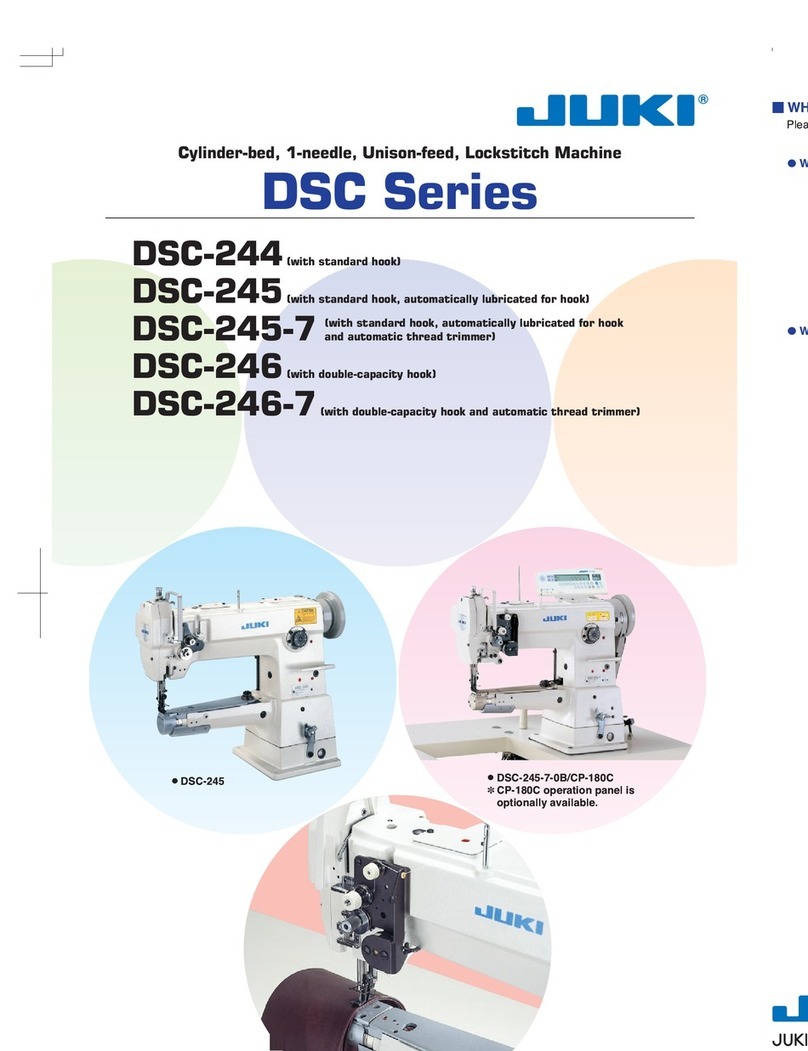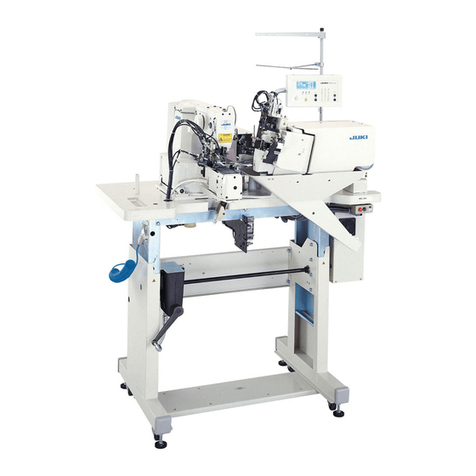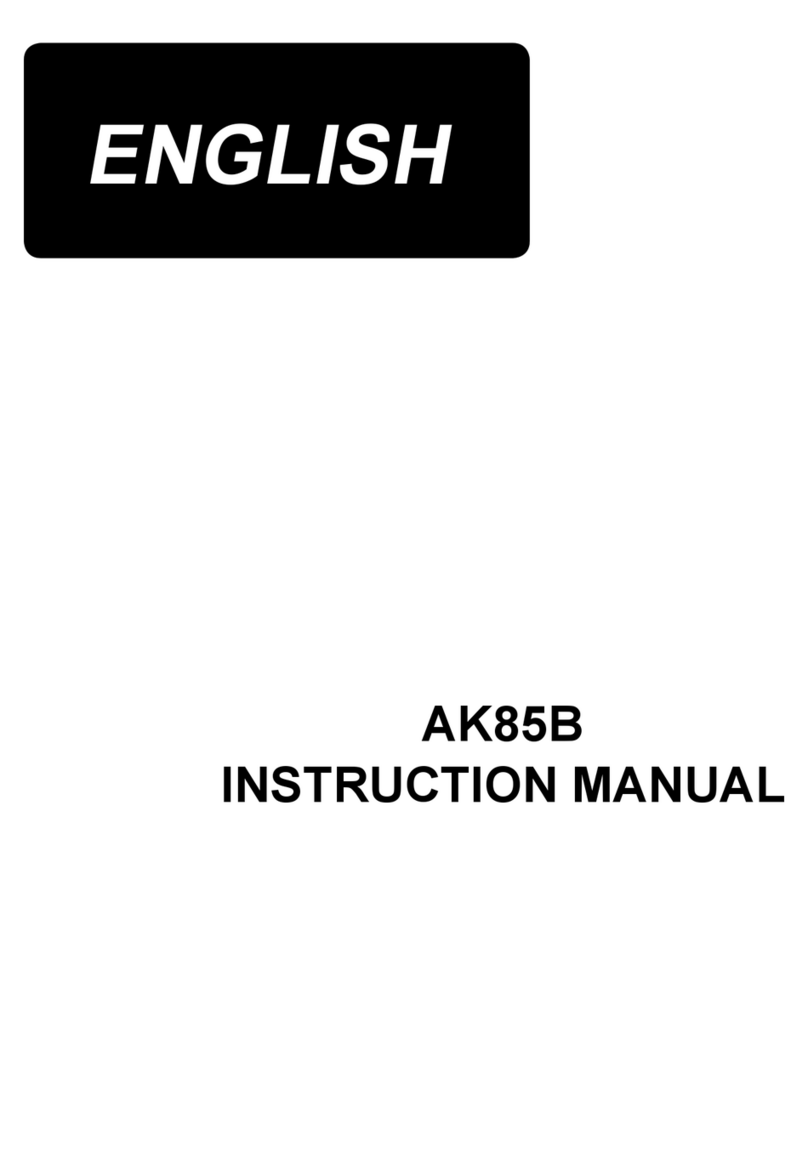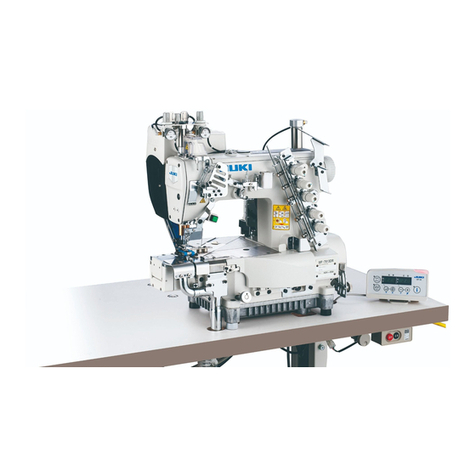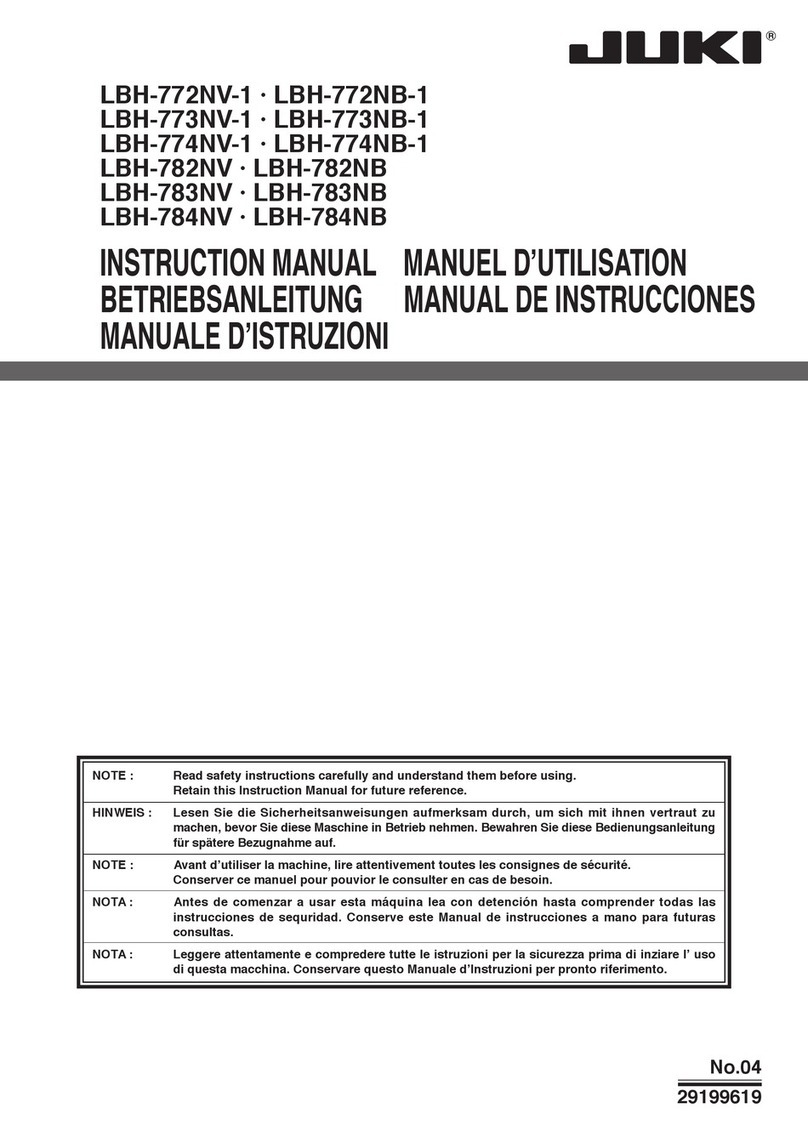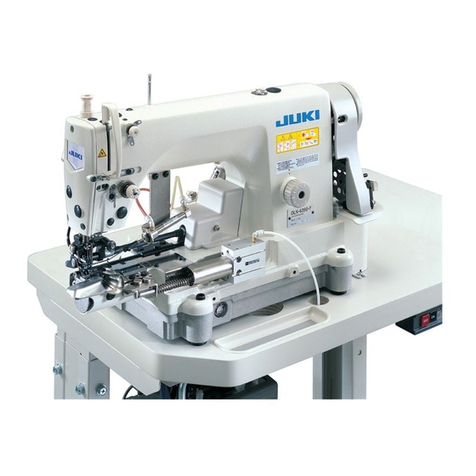6
Inhalt / Table des matières
Sicherheitsvorschriften ........................... 3
Inhalt...................................................... 6
Details der Maschine .......................... 7,8
• Zubehöre ............................................8
Maschine bereitstellen /
Inbetriebnahme .................................. 9
• Fussanlasser anschliessen................. 9
• Fadenführung................................... 10
• Befestigen des Spulenhalters für
Kettenfaden ...................................... 10
• Fadenspulen aufsetzen .................... 11
Inbetriebnahme
• Haupt- und Lichtschalter ................... 12
• Zweistufen Nähfusslifterhebel mit
integriertem Nähfussspitzen
- Anheber .......................................... 13
• Nähfuss auswechseln....................... 13
• Greiferdeckel .................................... 14
• Stoffauflagedeckel ............................ 14
• Handrad ........................................... 14
• Obermesser hochstellen/senken ...... 12
• Nadeln einsetzen / Nadlen /
Faden.......................................... 15-17
Einstellen und Bedienen
• Stichlänge ........................................ 18
• Messerposition ................................. 18
• Differentialtransport .......................... 19
• Einreihen .......................................... 20
• Obergreiferabdeckung...................... 21
• Rollsäumen ...................................... 21
• Nähfussdruck ................................... 22
• Band annähen.................................. 22
Bedienen, Praktisches Nähen
• Fadenreissen während des
Nähens............................................. 23
• Stiche auftrennen ............................. 23
• Einfädeln vorbereiten / Tipps ............ 24
Stichübersicht ................................. 29,30
Einfädeln 4/3 Faden OL
• Oberer Greiferfaden.......................... 33
• Unterer Greiferfaden......................... 34
• Rechte Nadel.................................... 35
• Linke Nadel ...................................... 36
• Kettenstich Greifer einfädeln ............ 37
Einfädeln kettenstich Nadel.................. 38
Kettenstich einfädeln und OL ............... 39
Nähprobe, Fadenspannung ............40-42
Cover Stich Funktionen ........................ 43
• Allgemeine Bedienungshinweise ....... 44
• Messerabdeckung / Cover-/ Kettenstich-
Abdeckung wechseln ........................ 45
Cover Stich einfädeln
• Cover Stich Greifer einfädeln ............ 46
• Cover Stich Nadel R einfädeln .......... 47
• Cover Stich Nadel C einfädeln .......... 48
• Cover Stich Nadel L einfädeln ...........49
3 Faden Cover Stitch einfädeln (Breit)..50
3 Faden Cover Stitch einfädeln
(Schmal)........................................... 51
2 Faden Kettenstich einfädeln.............. 52
Cover Stich Nähprobe und
Sticheinstellung................................. 53
Kettenstich Nähprobe .......................... 53
Fadenspannung anpassen................... 54
Cover Stich praktisches Nähen
• Nähende, Stiche sichern ................... 55
• Stiche auftrennen.............................. 55
• Einfacher Saum ................................56
• Flache Verbindungsnaht ................... 56
• Saum mit eingenähtem Elast ............ 57
• Einfassungen.................................... 57
• Naht / Bund / Besatz absteppen........ 58
Kettenstich Praktisches Nähen
• Kräuseln mit Kettenstich ................... 59
• Einfassungen.................................... 59
Wartung
• Achtung: Beachten Sie die
Sicherheitshinweise! ......................... 60
• Untermesser auswechseln ............... 60
• Glühlampe wechseln ........................ 61
• Reinigen und Ölen............................ 61
Hilfe bei Störungen............................... 64
Technische Daten ................................ 67
Sonderzubehör .................................... 68
Consignes de sécurité ........................... 4
Table des matières................................. 6
Détails de la machine.......................... 7,8
• Accessoires ........................................ 8
Préparation de la machine
/ mise en service ................................. 9
• Raccordement de la pédale ................9
• Guide-fil ............................................ 10
• Fixer le support de bobine prévu pour
le fil de point chaînette ...................... 10
• Mise en place des bobines de fil ....... 11
Mise en service
• Commutateur principal et interrupteur
de lumière ......................................... 12
• Levier du pied-de-biche à deux positions
avec releveur intégré des pointes du
pied-de-biche .................................... 13
• Remplacement du pied-de-biche ...... 13
• Couvercle du boucleur ...................... 14
• Plateau de travail .............................. 14
• Volant ............................................... 14
• Relever et abaisser le couteau
supérieur........................................... 12
• Mettre les aiguilles en place
/ Aiguilles / Fill ..............................15-17
Réglage et utilisation
• Longueur de point............................. 18
• Position du couteau .......................... 18
• Entraînement différentiel ................... 19
• Fronçage .......................................... 20
• Recouvrement du boucleur
supérieur .......................................... 21
• Ourlets roulés ................................... 21
• Pression du pied-de-biche ................ 22
• Pose de ruban .................................. 22
Couture pratique
• Cassure du fil durant la couture ........ 23
• Découdre une couture ...................... 23
• Préparer l’enfilage / conseils ............. 24
Récapitulation des points ................ 31,32
Enfilage du point de surjet à 4/3 fils
• Fil de boucleur supérieur .................. 33
• Fil de boucleur inférieur .................... 34
• Aiguille de droite ............................... 35
• Aiguille de gauche............................. 36
• Enfiler le boucleur pour le point
de chaînette ...................................... 37
Enfilage point de chaînette................... 38
Enfilage point de chaînette et surjet ..... 39
Essai de couture, tension de fil........40-42
Fonctions du point enveloppant............ 43
• Chaînette et indications générales sur
son utilisation .................................... 44
• Plaquette de recouvrement du point
enveloppant/de chaînette .................. 45
Enfilage pour le point enveloppant
• Enfilage du boucleur pour le point
enveloppant ...................................... 46
• Enfiler l’aiguille (droite) R pour le point
enveloppant ...................................... 47
• Enfiler l’aiguille (centre) C pour le point
enveloppant ...................................... 48
• Enfiler l’aiguille (gauche) L pour le point
enveloppant ...................................... 49
Enfilage pour le point enveloppant
à 3 fils (large) .................................... 50
Enfilage pour le point enveloppant
à 3 fils (étroit) .................................... 51
Enfilage du point de chaînette à 2 fils ... 52
Test de couture et réglages du point
enveloppant ...................................... 53
Test du point de chaînette ....................53
Adapter la tension ................................ 54
Couturepratiqueaveclepointenveloppant
• Extrémité de la couture, arrêter les
points, point enveloppant .................. 55
• Défaire les points.............................. 55
• Ourlet simple .................................... 56
• Couture d’assemblage plate ............. 56
• Ourlet avec un élastique fixé par une
couture ............................................. 57
• Entourages....................................... 57
• Couture / Ceinture / Surpiquer une
parmenture....................................... 58
Couturepratiqueaveclepointdechaînette
• Fronces avec point de chaînette.......59
• Entourages....................................... 59
Maintenance
• Attention: respecter les prescriptions
de sécurité........................................ 60
• Remplacement du couteau inférieur . 60
• Remplacement de l’ampoule ............ 61
• Nettoyage et huilage......................... 61
Comment éliminer soi-même les
pannes ............................................. 65
Caractéristiques ................................... 67
Accessoires spéciaux .......................... 68
